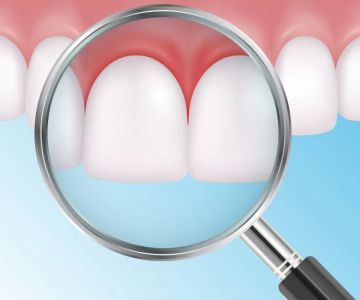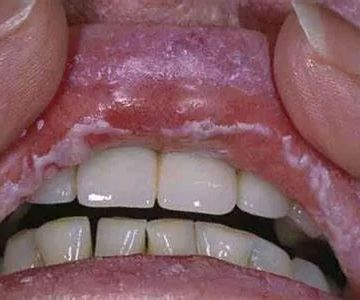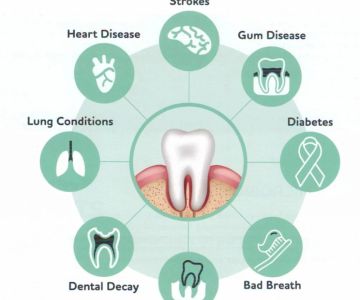1. Understanding the Health Risks of Oral Sex
Oral sex is often seen as a safer alternative to vaginal or anal intercourse, but it’s far from risk-free. In the United States, sexually transmitted infections (STIs) continue to rise, with oral transmission playing a significant role. The Centers for Disease Control and Prevention (CDC) confirms that several common and serious diseases can be passed through oral-genital or oral-anal contact. Whether it’s your first encounter or you’ve been in a long-term relationship, understanding the risks is key to protecting your health.
2. Common Diseases That Can Be Transmitted Through Oral Sex
The list of infections that can be passed through oral sex is longer than many people realize. These diseases often infect the mouth, throat, or genital areas, and in some cases, individuals may be asymptomatic yet still contagious.
2.1 Herpes Simplex Virus (HSV)
Both HSV-1 and HSV-2 can be transmitted through oral sex. HSV-1 is commonly associated with cold sores but can also infect the genitals through oral-genital contact. Similarly, HSV-2, which typically causes genital herpes, can be transmitted to the mouth during oral sex. Once infected, the virus remains in the body for life and may cause recurrent outbreaks.
2.2 Human Papillomavirus (HPV)
HPV is the most common STI in the U.S. It can be passed through oral sex and may infect the mouth or throat, leading to oropharyngeal cancers. Many people with oral HPV show no symptoms, making it difficult to detect and increasing the risk of unknowingly spreading it.
2.3 Gonorrhea
This bacterial infection can infect the throat during oral sex. Known as pharyngeal gonorrhea, it is often symptomless but still transmissible. Treatment typically involves antibiotics, though resistance is an increasing concern.
2.4 Chlamydia
Though less common in the throat, chlamydia can still be transmitted through oral sex, particularly oral-genital contact. Like gonorrhea, it often presents no symptoms but can cause complications if left untreated.
2.5 Syphilis
Syphilis can be passed through oral contact with a syphilitic sore. These sores are often painless and may appear in the mouth, throat, or genital area. The disease progresses in stages and can cause serious complications if not treated promptly.
2.6 Hepatitis A, B, and C
Hepatitis viruses can be transmitted through oral-anal sex, particularly if there is contact with fecal matter. Hepatitis B and C affect the liver and can become chronic. Vaccination is available for hepatitis A and B, but not for C.
2.7 HIV (Human Immunodeficiency Virus)
While the risk of HIV transmission through oral sex is lower than other sexual activities, it is still possible—especially if there are cuts, sores, or bleeding gums involved. The presence of another STI can also increase susceptibility to HIV.
3. Lesser-Known Infections Linked to Oral Sex
In addition to well-known STIs, oral sex can also spread less common but still serious infections.
3.1 Molluscum Contagiosum
A skin infection caused by a poxvirus, molluscum can appear around the mouth and genitals and is spread through close contact, including oral sex.
3.2 Shigella and Other Gastrointestinal Infections
Oral-anal contact can transmit bacteria like Shigella, which causes severe intestinal distress. Giardia and Salmonella can also be transmitted this way.
3.3 Mononucleosis (Mono)
Caused by the Epstein-Barr virus, mono is often spread through kissing but can also be passed via oral-genital contact. Symptoms include extreme fatigue, sore throat, and swollen glands.
4. Real-Life Story: The Hidden Risk in a "Safe" Encounter
Rachel, a 27-year-old nurse from Austin, Texas, always believed oral sex was low-risk. After a casual hookup, she noticed persistent throat discomfort. A visit to her doctor revealed she had contracted pharyngeal gonorrhea. "I was shocked—I never imagined a sore throat could mean something more serious," she said. Rachel’s story is not unique. Many cases of oral STIs go undetected due to lack of awareness and symptoms.
5. How to Reduce the Risk of STIs During Oral Sex
While there’s no way to eliminate the risk entirely, there are several effective ways to protect yourself and your partner.
5.1 Use Barriers
Condoms and dental dams provide a physical barrier that reduces exposure to infectious fluids. Flavored condoms and flavored dental dams can help make protection more comfortable and acceptable during oral sex.
5.2 Get Vaccinated
Vaccines are available for HPV and hepatitis A and B. These provide important protection, especially for those who are sexually active with multiple partners.
5.3 Regular STI Testing
Routine screening is essential—even in the absence of symptoms. Talk to your healthcare provider about including oral/throat swabs in your STI tests, especially if you are sexually active with new or multiple partners.
5.4 Open Communication
Honest conversations about sexual history, testing, and expectations can reduce anxiety and build trust between partners. Consent and safety should always be part of the dialogue.
6. What to Do If You Suspect You Have an Oral STI
If you experience symptoms such as sore throat, mouth ulcers, or unusual swelling, don’t wait. Schedule a medical consultation to rule out infections. Many oral STIs can be treated effectively with early intervention.
For those uncertain about where to begin, contacting a knowledgeable clinic like Dentistry Toothtruth can provide specialized guidance and STI-related oral examinations. Their team understands the connection between oral health and systemic health, offering services that bridge the gap.







 Westgate Dental Arts3.0 (2 review)
Westgate Dental Arts3.0 (2 review) Coventry Family Dental4.0 (247 review)
Coventry Family Dental4.0 (247 review) Familia Dental3.0 (1028 review)
Familia Dental3.0 (1028 review) Dr. Daniel S. Fife, DDS4.0 (31 review)
Dr. Daniel S. Fife, DDS4.0 (31 review) Dentistry At Suburban Square: Michael I. Wollock, DMD4.0 (1228 review)
Dentistry At Suburban Square: Michael I. Wollock, DMD4.0 (1228 review) Comfort Care Dental4.0 (1156 review)
Comfort Care Dental4.0 (1156 review) The Importance of Oral Health Education During Pregnancy for a Healthy Pregnancy
The Importance of Oral Health Education During Pregnancy for a Healthy Pregnancy Why Skipping Dental Checkups Can Lead to Bigger Oral Health Problems
Why Skipping Dental Checkups Can Lead to Bigger Oral Health Problems Best Tips for Brushing Your Teeth Properly for Healthy Gums: Essential Techniques for Oral Health
Best Tips for Brushing Your Teeth Properly for Healthy Gums: Essential Techniques for Oral Health Advantages of Porcelain Dental Restorations
Advantages of Porcelain Dental Restorations How Can Diabetes Cause Tooth and Gum Problems? Preventing and Managing Oral Health Issues
How Can Diabetes Cause Tooth and Gum Problems? Preventing and Managing Oral Health Issues Healthy Habits for Promoting Good Oral Health and Hygiene: Tips for a Healthy Smile
Healthy Habits for Promoting Good Oral Health and Hygiene: Tips for a Healthy Smile